
Telehealth Newsletter
Official Newsletter of Tamil Nadu Chapter of Telemedicine Society of India
What is New?
TSI has recently opened its 12th chapter in Haryana, marking another milestone in its growth and expansion.
ChatGPT, an AI language model, has been generating buzz this year with its impressive capabilities. It has been used in this issue to create fascinating AI-related news and articles that are worth checking out for anyone interested in this exciting field.
Furthermore, in this issue, Dr. Vikrant Mittal has contributed an article about the progress of tele-psychiatry in the country. This is an interesting read for anyone interested in mental health and technology.
Last but not least, our past presidents, Dr. B,S. Ratta and Mr. L. Satyamurthy, attended the American Telemedicine Congress, the biggest event in the field. They have compiled all the highlights of the event, so be sure to read and benefit from their insights.
Finally, we would like to wish everyone a Happy Easter!
Thank You
Dr. Sunil Shroff
Chief Editor
President – TN Chapter – TSI
Haryana State Chapter – Telemedicine Society Of India(TSI) Inaugurated at Amrita Hospital, Faridabad
Shruti Saxena
DGM – PR & Communications (North), Amrita Hospital, Faridabad
The newly formed Haryana State Chapter— Telemedicine Society of India (TSI) was inaugurated at Amrita Hospital, Faridabad. Swami Nijamritananda Puri, Administrative Director, Amrita Hospital, Faridabad, lighted the lamp and inaugurated the project.
Delivering the inaugural speech, he said, “Ours is a country where most people do not have access to proper medical care. Though there are several reasons, one of the main reasons is the geographical factor. Launching the Haryana Chapter will help transcend the obstacles and help people denied advanced medical assistance.”
Telemedicine facilitates communication between a doctor and a patient in a remote location with the support of the latest technology. Artificial Intelligence (AI) and Machine Learning support an accurate diagnosis. It includes phone calls, video chats, emails, text messages, and even drone delivery of medicines. Telemedicine is often called telehealth, digital medicine, e-health, or m-health (mobile health). The Haryana Chapter aims to connect patients who need medical help with in-house technical teams using telemedicine and clinics on wheel units.
Dr. Prem Nair, Group Medical Director, Amrita Hospitals & Vice-President National Telemedicine Society of India, said during disasters when all modes of communication are down, satellites establish connectivity with patients within the time described as the golden hour. When the tsunami struck, it was possible to provide healthcare to people in Lakshadweep and Andaman & Nicobar Islands through telemedicine. “This was one of the important milestones for us in telemedicine,” he said, adding, “We have also been successful in mobile telemedicine. We have been able to provide teleconsultation and teleeducation through mobile telemedicine units. We look forward to working with the Telemedicine Society of India and start connecting with local healthcare facilities to support some of the far-flung areas in Northern India substantially.”
Prof Meenu Singh, President of National Telemedicine Society & Director of AIIMS, Rishikesh said, “The government of Haryana started telemedicine Delhi-NCR and Chandigarh many years ago. It is 25 since telemedicine services began in Haryana when Prof. BD Gupta introduced it in 1997. In 2005, the Prime Minister of India started telemedicine along with ISRO and the Department of Education and Technology. It is gratifying to see Amrita collaborating with ISRO and other agencies.”
Stressing the need to bridge the healthcare digital divide, Dr. Puneet Dhar, President, Haryana Telemedicine Chapter said, “About 1.3 billion people in the country fall in the spectrum of the healthcare digital divide. Healthcare infrastructure development is vital to the country’s development, and telemedicine can help. The increasing penetration of smartphones, mobile connectivity, and the internet makes it a game changer. Amrita has been a pioneer in exploring this. During natural disasters, our telemedicine van goes around providing treatment. It proved to be crucial when Covid-19 struck,” he said. He also pointed out the case of start-ups providing online consultation, remote patient monitoring systems, and online pharmacy services that use drones and assist in palliative care.
Unlike the developed world economies, healthcare infrastructure and distribution of the medical fraternity are not uniform in India. A robust, uniform referral system is lacking to directly refer sick patients suffering from specific diseases in remote areas, where tertiary/quaternary is missing. The absence of hospitals/centers/institutes with state- of- art facilities for their treatment further jeopardizes the survival of these sick patients.
The chapter in Haryana is the first step towards making high-quality healthcare accessible to all our citizens. It will help ensure a future where healthcare is no longer a privilege but a fundamental right of every citizen of India. The Chapter is dedicated to hand-hold government/semi-government/private healthcare stakeholders to improve healthcare quality at all levels in Northern India and the rest of the country.
However, some challenges come in implementing telemedicine services in India. The lack of infrastructure, limited internet connectivity, and the shortage of healthcare professionals trained to use telemedicine technologies are some of the challenges that need to be addressed. Hospitals and other conventional healthcare institutions can be crucial in expanding telemedicine services in India. They can provide the necessary infrastructure and technical expertise needed to support telemedicine services. They can also provide the required training for healthcare professionals to use telemedicine technologies effectively.
The TSI’s Haryana Chapter will collaborate with all medical colleges/institutions to provide an in-training for future doctors. It is the 16th state chapter of TSI in India. They will also team up with various stakeholders for quality improvement in all aspects of healthcare- preventive, primary, secondary, and tertiary levels. It is of utmost importance for achieving Millennium Development Goals.
Dr. Kamal Bijlani, Director of E-Learning Research Labs (AERL), is the secretary, and Dr. Tarana Gupta is the treasurer of the Haryana Chapter. Currently, the Society has 45 members.
Dr. Murthy Remilla, Secretary, TSI spoke at the event. Dr. Arti Pawaria, Senior Consultant & Clinical Lead, Department of Paediatric Hepatology, Gastroenterology & Liver Transplantation, Amrita Hospital, Faridabad, Dr. Ashutosh Sharma, Medical Superintendent, Amrita Hospital, and Dr. (Col) B.K. Mishra, Principal, Amrita School of Medicine, Faridabad, graced the occasion.
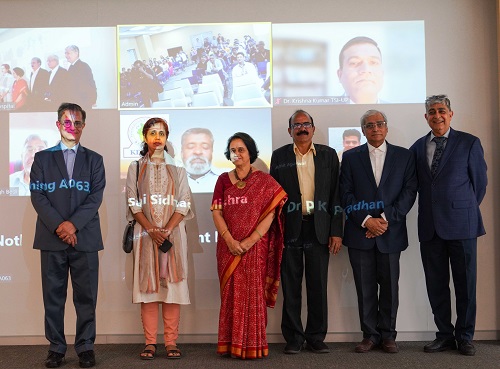
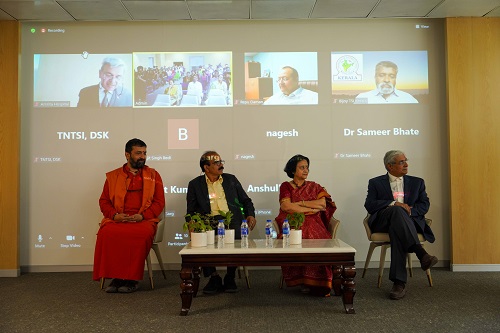
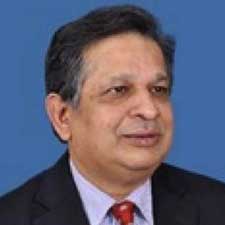
Meet ChatGPT: Your Intelligent Companion for Endless Conversations!”
Dr. Sunil Shroff
President, Tamil Nadu Telemedicine Society of India | Consultant Urologist & Transplant Surgeon
ChatGPT is an artificial intelligence language model that is designed to interact with us humans through text-based conversations. It uses a machine learning algorithm to generate responses to questions or statements, and its responses are based on the patterns and information it has learned from large amounts of text data.
To put it simply, ChatGPT is like having a conversation with a very knowledgeable and intelligent computer program. It can understand and respond to a wide range of topics, from basic questions about the weather or current events to more complex discussions about science, technology, and philosophy.
ChatGPT is not a physical entity, but rather a software program that operates in the cloud. It is accessible through various chat platforms, such as messaging apps or websites, and can be used by anyone with an internet connection.
Overall, ChatGPT is a powerful tool that can provide information, support, and entertainment to people around the world, and its capabilities continue to improve as its machine learning algorithm evolves and learns from more data.
The impact of ChatGPT on content writing is likely to be significant. With the ability to generate high-quality, human-like responses to text-based conversations, For example, ChatGPT can be used to generate blog posts, news articles, and product descriptions, and can even be used to create entire websites or e-books. However, it’s important to note that ChatGPT is not perfect and still has limitations. While it can generate text that sounds natural and coherent, it can also produce responses that are irrelevant or even nonsensical. Therefore, it’s likely that human writers will still be needed to edit and refine the content generated by ChatGPT.
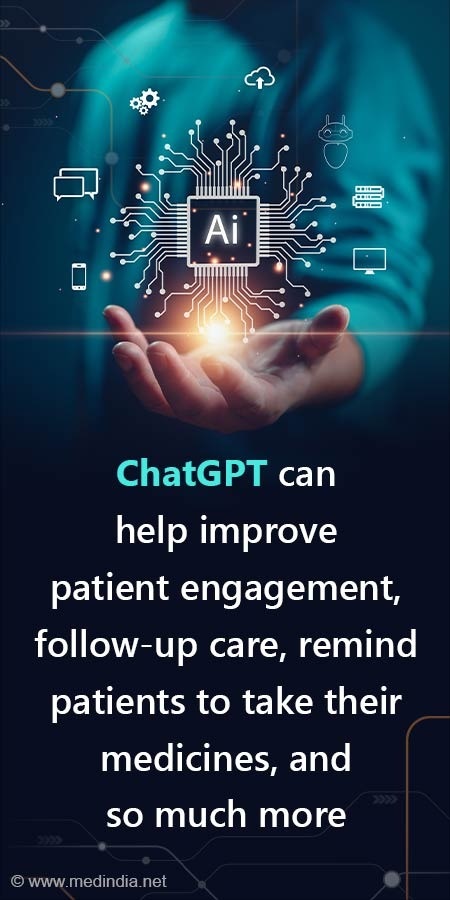
Furthermore, ChatGPT is not a replacement for human creativity and originality. While it can generate text based on existing patterns and information, it cannot create entirely new ideas or concepts. Therefore, human writers who are able to think critically and creatively will still be valuable in the content writing industry.
Overall, while ChatGPT has the potential to disrupt the content writing industry, it is likely to complement rather than replace human writers. By automating many of the repetitive and time-consuming tasks associated with content creation, ChatGPT can free up human writers to focus on higher-level tasks, such as brainstorming new ideas, developing creative concepts, and refining the quality of the content.
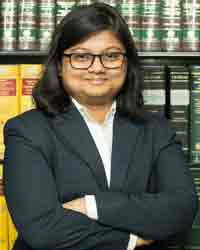
Privacy in Healthcare: Changing Times and Systems
Ms. Bagmisikha Puhan
Associate Partner, TMT Law Practice
In the wake of the recent breach which has been suffered by a leading pharmaceutical company, Sun Pharmaceutical Industries, owing to a ransomware attack – it has become apparent how a sensitive sector like the healthcare does not have enough safeguards in place in terms of data privacy. Fortunately, as a listen entity and in view of the CERT-In Directions notified last year, there was a modicum of an obligation placed squarely on the company to make these disclosures.
However, it is not a sector which can be left fraught with risks, which make the individuals – who could be patients, recipients of transplants, clinical trial participants, surrogates, and several such other individuals, become subject to a harrowing experience at the hands of a person who intends to abuse their data. It is to this end that in addition to the existing policy and standard frameworks which apply to the healthcare framework, only with persuasive value – there be the introduction of an umbrella privacy framework which applies to all and sundry as a mandate.
It has been oft the case that the end user, to whom the information pertains to, either rely on IT, e-commerce, consumer protection laws to somehow build a case for preserving and enforcing their own right to privacy – which is now a fundamental right, in the stead of being presented with a forum which is marked with the dedicated objective of enforcing their rights.
We have already witnessed the turmoil that is being faced by the e-pharmacies in wake of the recent court order, which was covered under the earlier newsletter; it is only imperative now that the draft drugs and cosmetics legislation which came into circulation last year be considered for further discussion and deliberation, to also look at the digital health ecosystem, privacy of the stakeholders anew.
While, as per the regulatory filings Sun was able to clarify that “we proactively isolated our network and initiated the recovery process.” It also went on to clarify that the incident did not impact the company’s core systems and operations. It is important to note that while Sun was able to contain it to impacted assets and not let the core systems suffer, imagine a healthcare organization suffering from a breach with their Health Information Systems being impacted, it will expose entire medical/ health histories of patients to the perpetrators.
Recently, ICMR issued the Ethical Guidelines for Application of Artificial Intelligence in Biomedical Research and Healthcare focusing on all stakeholders, including innovators, developers, technologists, researchers, healthcare professional, Ethics Committees (ECs), Institutions, sponsors, and funding agencies involved in research related to artificial intelligence in biomedical research and healthcare. The preface to the guidelines state that the central goal for AI and ML systems should be to make the platforms available for the benefit of the largest section of common people with safety and highest precision possible. This will also press further the need to have a robust privacy framework. We shall discuss finer details of these Guidelines in the next newsletter.
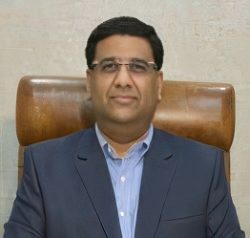
Telepsychiatry in India: Brief Review
Dr. Vikrant Mittal MBBS, MD (Psychiatry)
Chief Medical Officer, Oasis Lifecare LLC
Background
Disruptor is a commonly used phrase in international IT & business settings. It specially came into vogue with technology disrupting how business was being done for decades. Similar disruption happened during coronavirus disease (COVID – 19) pandemic in the field of telemedicine in India. Some initial data and perception suggest that depression and anxiety increased in general population after Covid-19. Associated with data from a previous study that reported shortage of psychiatrist in India – only 2 psychiatrists for a population of 10 lakh (1). This has brought increased focus on psychiatry. And this is one of the opportunities where telepsychiatry can help bridge the gap in care and achieve more.
History
Similar to other branches telepsychiatry was also growing as the need arose and with technological advances in cameras, connectivity infrastructure and audio technology. Earliest use of telepsychiatry has been mentioned as a 1961 article on two-way television in group therapy (2). Over the years, telepsychiatry has been studied in different settings – child and adolescent population, adult forensic and correctional psychiatry and in geriatric populations throughout the world. It has shown to be highly effective and improved sustained care even in Schizophrenia and other psychotic disorder patient population (3). Indian data also suggests telepsychiatry is more economical than the present practice of in-person clinical care (4). It is also acceptable and feasible to the general population (5).
Progress
In India, one of the first implementation project was during the devastating 2004 Tsunami calamity mainly in Coastal districts of Tamil Naidu. This was done by an NGO SCARF (The Schizophrenia Research Foundation) (6). They provided psychological support services and training to volunteers.
Over the years mainly various government organizations have led in developing telepsychiatry guidelines for both synchronous and nonsynchronous models. Some of the successful models highlighted by Naskar S et al (2017) are STEP model by SCARF, PGIMER, Ganiyari model and ATP in different states (7).
In reaction to Covid 19 and to utilize virtual medical practice The Telemedicine practice guidelines were released in March 2020 (8). Following it in May 2020 Medical Council of India released the Telemedicine practice guidelines, The Indian Psychiatric Society (IPS) and Telemedicine Society of India (TSI) in collaboration with the National Institute of Mental Health and Neurosciences (NIMHANS) released Telepsychiatry operational guidelines (9). Guidelines outline scope, definitions, norms, protocols, and framework to implement telemedicine services. These guidelines are to help better understand the administrative and legal concerns present in practicing telemedicine. Other highlights of the guidelines are that both synchronous and asynchronous communication modes could be utilized to deliver service. Psychiatrists would be able to consult patients across the country leading to better and equitable access to all parts of the country. The guidelines offer legal protection to all the stakeholders and a higher likelihood of maintaining patient records. The inclusion of research and training in the guidelines would provide the necessary scope to evaluate the telepsychiatry practice (10).
Conclusion
At present there is an estimated huge gap ranging from 75% to 93% (11). Telepsychiatry services provided by both private and public providers would help bridge this gap. Guidelines provide a working framework that will help smooth implementation of programs, easy accessibility of services to all. Guidelines should be updated periodically with inputs from all stakeholders. This would be prudent given the ever-evolving technology, types of stakeholders and patient needs.
References:
Mohandas E. Roadmap to Indian psychiatry. Indian J Psychiatry 2009;51:173-9.
Wittson CL, Affleck DC. Two-way television in group therapy. Mental Hospitals Magazine. 1961 Nov: 22-23.
Dwyer TF. Telepsychiatry: Psychiatric consultation by interactive television. Am J Psychiatry 1973;130:865-9.
Moirangthen S et al. Telepsychiatry as an economically better model for reaching the unreached: A retrospective report from South India. Indian J Psychol Med 2017;39:271-75.
Das S et al. Tele-psychiatric after care clinic for the continuity of care: A pilot study from an academic hospital. Asian J Psychiatry 2020;48:101886.
Thara R, John S, Rao K. Telepsychiatry in Chennai, India: The SCARF experience. Behav Sci Law 2008;26:315-22.
Naskar S et al. Telepsychiatry in India – Where do we stand? A comparative review between global and Indian telepsychiatry programs. Indian J Psychol Med 2017;39:223-42.
Board of Governors in supersession of the Medical Council of India. Telemedicine practice guidelines. 1st ed. India BOD-MCI. India, 2020.
Math SB, Manjunatha N, Kumar CN, et al. Telepsychiatry Operational Guidelines-2020. Bengaluru: NIMHANS.ISBN No: 978-81-945815-29.
Dinakaran D et al. Telemedicine practice guidelines and telepsychiatry operational guidelines, India – Commentary. Indian J Psychol Med. 2020;42(5S):1s-3s.
Gururaj G et al. National Mental Health Survey of India, 2015-16. Prevalence, patterns and outcomes. 2017. Ministry of Health and family Welfare, Government of India.
Conflict of Interest:
Author is partner at USI Health LLP which owns Telepsych website and App.
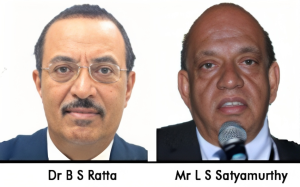
Glimpses of American Telemedicine Association 2023 Conference, San Antonio, Texas
Satyamurthy Lakkavalli and Bhagwant Singh Ratta
Suquino Telehealth India
Mr. L Satyamurthy and Dr. B S Ratta, our two Past Presidents attended ATA 2023 at San Antonio on 4th, 5th & 6th March 2023.
Brief Report:
It was a Teletreat for us to attend and present our Paper. There were over 300 Speakers & 2000 Attendees, spread out by Sessions on Tele Business, Clinical Opportunities, Policy, Research, Technology apart from Special Interest Group (SIG) Meeting, Book Signing by Authors, CEO Spotlight, Deep Dive, Express Theatre talks, Fire side chats, Keynotes, Panel Discussions, Patient Spotlight, Research Oral & Poster Presentations & Workshops.
A.I, Remote monitoring, Building and sustaining Tele Networks, Transforming care for rural populations were the highlights.
Every delegate, exhibitor was on an APP and he or she could prepare their own planner, see exhibitors & sponsors, including Scientific Program.
S.I.G Meetings were held on Telemental health, Ocular Telehealth, Govt relations, Acute & Critical Care Digital transformation, Remote monitory home & community telehealth, Home testing ATA Global Health Collaborative etc.
Telehealth, Innovators challenge was another highlight along with the startup conclave.
The exhibitors (Over 200) were par excellent and each stall was designed elegantly – The Keynotes, Panel Discussions in the mornings with over 2000 seating capacity and Breakfast/Lunch area were all in one huge hall with exhibitors and one could easily do 10,000 steps a day in that arena. There were over 4 break away groups for rest of the day. The Startup Zone was vibrant and their stalls were classic.
All in all it has left an indelible memory to be cherished. The overall program, arrangements, interactions, networking & fun is value for money and strongly recommend our young enthusiasts to take the lead and represent India.
Social Program – Casino Night & Welcome reception on Day 1 was a fun filled evening followed by a Paid Dinner on the 2nd night and the last day was by the river in the Hard Rock Café
With live music where everyone let them loose and enjoyed.
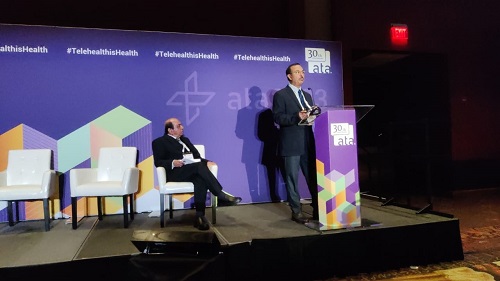
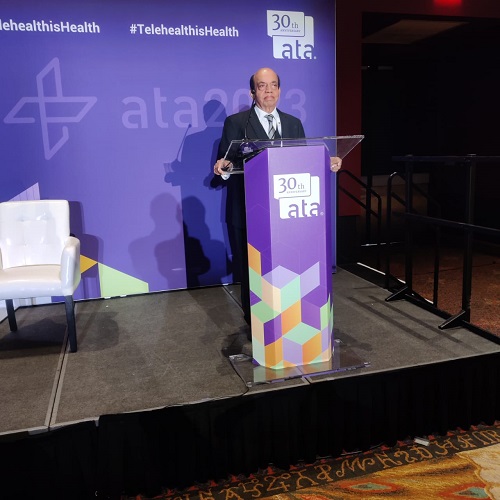
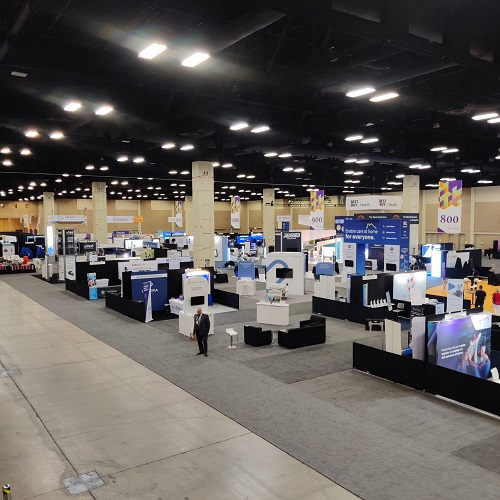
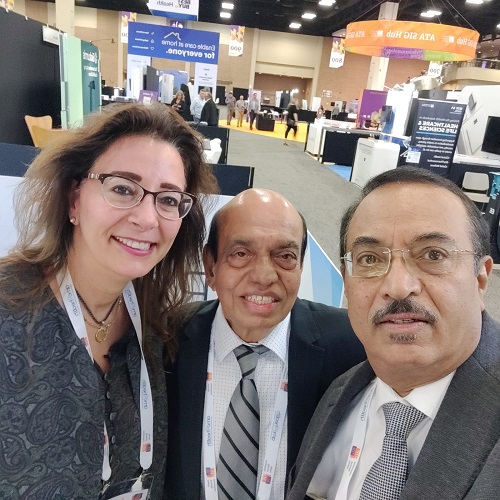
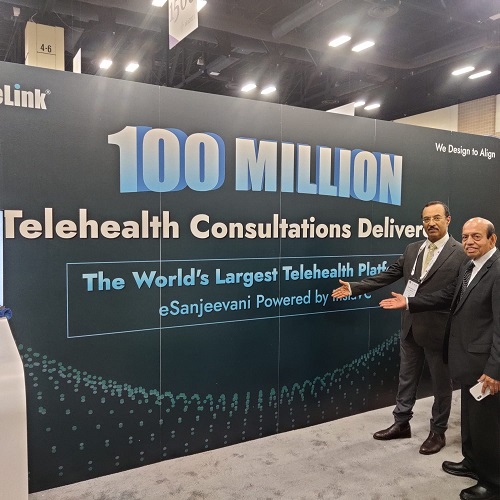
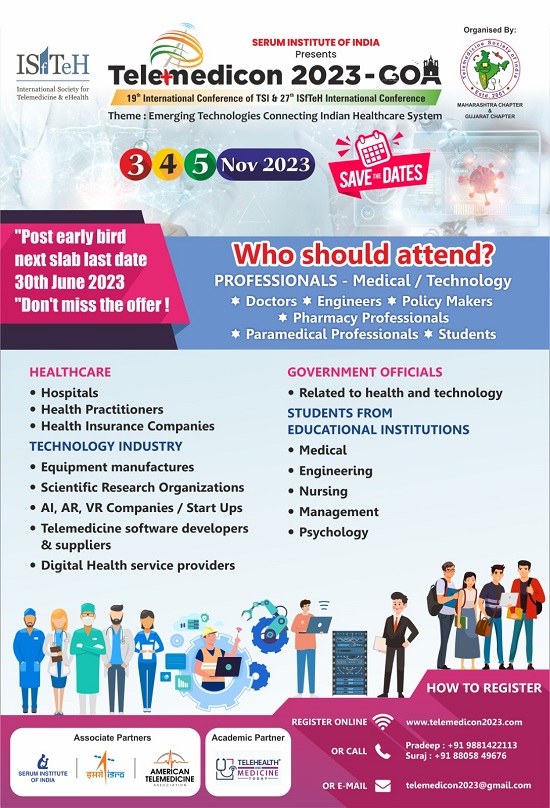
Telemedicine – News from India & Abroad
AI system can predict cardiovascular risk more accurately than humans
Researchers at the University of Oxford developed an AI system that uses machine learning to predict a person’s risk of developing heart disease and stroke. The AI system was able to produce a personalized risk score for each patient using medical data such as blood tests and lifestyle factors. In a study of over 400,000 patients, the AI system was able to predict cardiovascular risk more accurately than traditional methods used by doctors. The study was published in the journal, The Lancet Digital Health. https://www.thelancet.com
AI system detects early signs of Alzheimer’s disease
Scientists at University College London developed an AI system that can detect early signs of Alzheimer’s disease in brain scans. The AI system uses machine learning to analyze brain scans and identify subtle changes in the brain’s structure that are associated with Alzheimer’s disease. In a study of over 500 patients, the AI system was able to accurately predict which patients would develop Alzheimer’s disease up to six years before symptoms appeared. The study was published in the journal, Radiology. https://pubs.rsna.org
AI technology helps diagnose rare genetic disorders
Researchers at the Children’s Hospital of Philadelphia developed an AI system that can help diagnose rare genetic disorders by analyzing patients’ medical records and DNA sequencing data. The AI system uses machine learning to identify patterns in the data that are associated with specific genetic disorders. In a study of over 1,000 patients, the AI system was able to accurately diagnose rare genetic disorders in a fraction of the time it would take for a team of human doctors to review the same data. The study was published in the journal, Science Translational Medicine. https://stm.sciencemag.org
AI system improves accuracy of breast cancer diagnosis
Scientists at Google Health developed an AI system that can improve the accuracy of breast cancer diagnosis by analyzing mammogram images. The AI system uses machine learning to identify subtle changes in breast tissue that are associated with breast cancer. In a study of over 76,000 mammograms, the AI system was able to reduce the number of false positives and false negatives, which could help improve the accuracy of breast cancer screening. The study was published in the journal, Nature. https://www.nature.com
AI technology helps predict ICU mortality rates
Researchers at the University of Chicago developed an AI system that can predict the mortality rate of patients in intensive care units (ICUs). The AI system uses machine learning to analyze patient data such as vital signs and laboratory results to produce a personalized risk score for each patient. In a study of over 46,000 patients, the AI system was able to predict ICU mortality rates more accurately than traditional methods used by doctors. The study was published in the journal, Critical Care. https://ccforum.biomedcentral.com
Telemedicine Practice Guidelines – A Foundation Course for RMPs by TSI Faculty
To know more about the Telemedicine Foundation Course click on the link below:
https://tsitn.org/tpg-course/
TN – TSI invites all the TSI Chapters and Members to submit information on their upcoming Webinar or Events (50 words), News related to Telemedicine (200 words) or short articles (500 words) for the monthly e-newsletter.Guidelines for submission to TN TSI Newsletter-
- Report can be from 500 to 600 words
- Report Should be relevant to Telemedicine or Medical Informatics
- No promotion of self or any product
- Avoid plagiarism
- All references should be included
- Provide any attributions
- Visuals are welcome including video links
- Send full authors name, degrees, affiliations along with a passport sized photograph of good resolution. If multiple authors only main author photo to be sent.
Submission may be sent to – tsigrouptn@gmail.com
Editors reserve the rights for accepting and publishing any submitted material.
Editor in Chief – Dr. Sunil Shroff
Editors – Dr. Senthil Tamilarasan & Dr. Sheila John
Technical Partner- https://www.medindia.net

